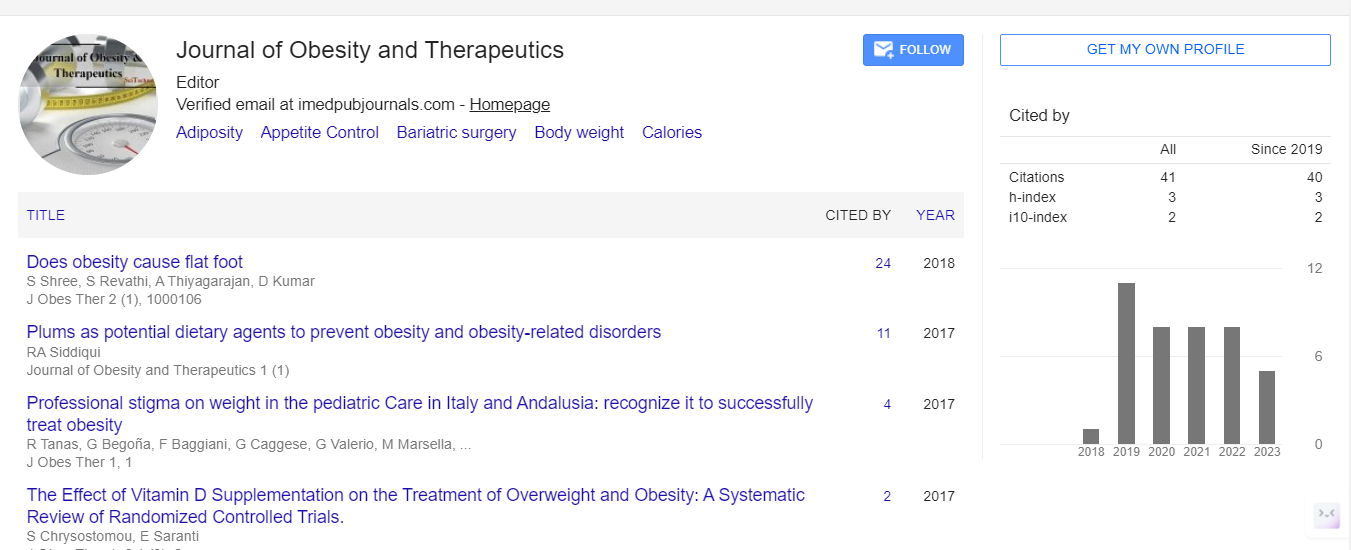Editorial, Jot Vol: 4 Issue: 1
Human Metabolism 2019 : Time to optimal glycaemic control and prognostic factors among Type 2 diabetes mellitus patients in public teaching hospitals in Addis Ababa, Ethiopia -  Tigist W Leulseged - St. Paul’s Hospital Millennium Medical College, Ethiopia
Tigist W Leulseged
St. Paul’s Hospital Millennium Medical College, Ethiopia
Abstract
Keywords: Obesity, Weight Management
Background: Diabetes is a progressive chronic disease characterized by high levels of glucose in the blood. Poorly managed diabetes leads to serious complications and early death. The prevalence of diabetes has increased in recent decades. Ethiopia is one of the African countries with the highest number of people living with diabetes. Studies in Ethiopia and other countries have mainly focused on the level of glycemic control at one point. Studies targeting the time for which a patient remained in a poor blood sugar level are lacking. Objective: To estimate time to first optimal glycemic control and to identify prognostic factors among Type-2 Diabetes Mellitus (T2DM) patients in public teaching hospitals in Addis Ababa, Ethiopia. Methods: A hospital based retrospective chart review study was conducted from April to July 2018 at diabetes clinic of Addis Ababa???s public teaching hospitals among randomly selected sample of 685 charts of T2DM patients who were on follow up from January 1, 2013 to June 30, 2017. Data was collected using pretested data abstraction tool. Data was checked, coded and entered to Epi-Info V.7.2.1.0 and exported to SPSS V.23.0 and STATA V.14.1 for analysis. Descriptive statistics is presented with frequency tables, Kaplan- Meier plots and median survival times. Association was done using Log-rank test and Cox proportional hazard survival model, where hazard ratio, P-value and 95% CI for hazard ratio were used for testing significance and interpretation of results. Results: Median time to first optimal glycemic control among the study population was 9.5 months. The major factors that affect it are age group (HR=0.635, 95% CI: 0.486-0.831 for 50- 59 years, HR=0.558, 95% CI: 0.403-0.771 for 60-69 years and HR=0.495, 95% CI: 0.310-0.790 for ???70 years), diabetes neuropathy (HR=0.502, 95% CI: 0.375-0.672), more than one complication (HR=0.381, 95% CI: 0.177-0.816), hypertension (HR=0.611, 95% CI: 0.486-0.769), dyslipidemia (HR=0.609, 95% CI: 0.450-0.824), cardiovascular disease (HR=0.670, 95% CI: 0.458-0.979) and hospital patient treated at (HR=1.273, 95% CI: 1.052-1.541). Diabetes is one of the biggest global health emergencies of the 21st century. Each year more and more people are living with this disease and this increase is seen more quickly in countries with limited resources. According to IDF Atlas and the WHO, about 45.1% of all adults aged 20 to 79 with diabetes in Africa live in four countries, including Ethiopia. In Ethiopia, the prevalence of diabetes in adults increased from 2.9% in 2015 to 3.8% in 2016 to 5.2% in 2017 [3–5]. People with diabetes can live longer and lead healthy lives if their diabetes is detected early and well managed, with integrated self-management and professional health support. The longer a person lives with undiagnosed, untreated and / or uncontrolled diabetes, the worse their health may be. Therefore, controlling blood sugar is essential to prevent and slow the progression of complications. In addition, studies of T2D patients who have been followed for a period of time have shown that old age, overweight, long standing diabetes, high cholesterol levels HgA1c, LDL-HDL, hypertension, micro-albuminuria and a history of cardiovascular disease are important predictors of poor glycemic control, morbidity and mortality. Conclusion: Median time to first optimal glycemic control among T2DM patients is longer than expected which might imply that patients are being exposed to more risk of complication and death
 Spanish
Spanish  Chinese
Chinese  Russian
Russian  German
German  French
French  Japanese
Japanese  Portuguese
Portuguese  Hindi
Hindi 